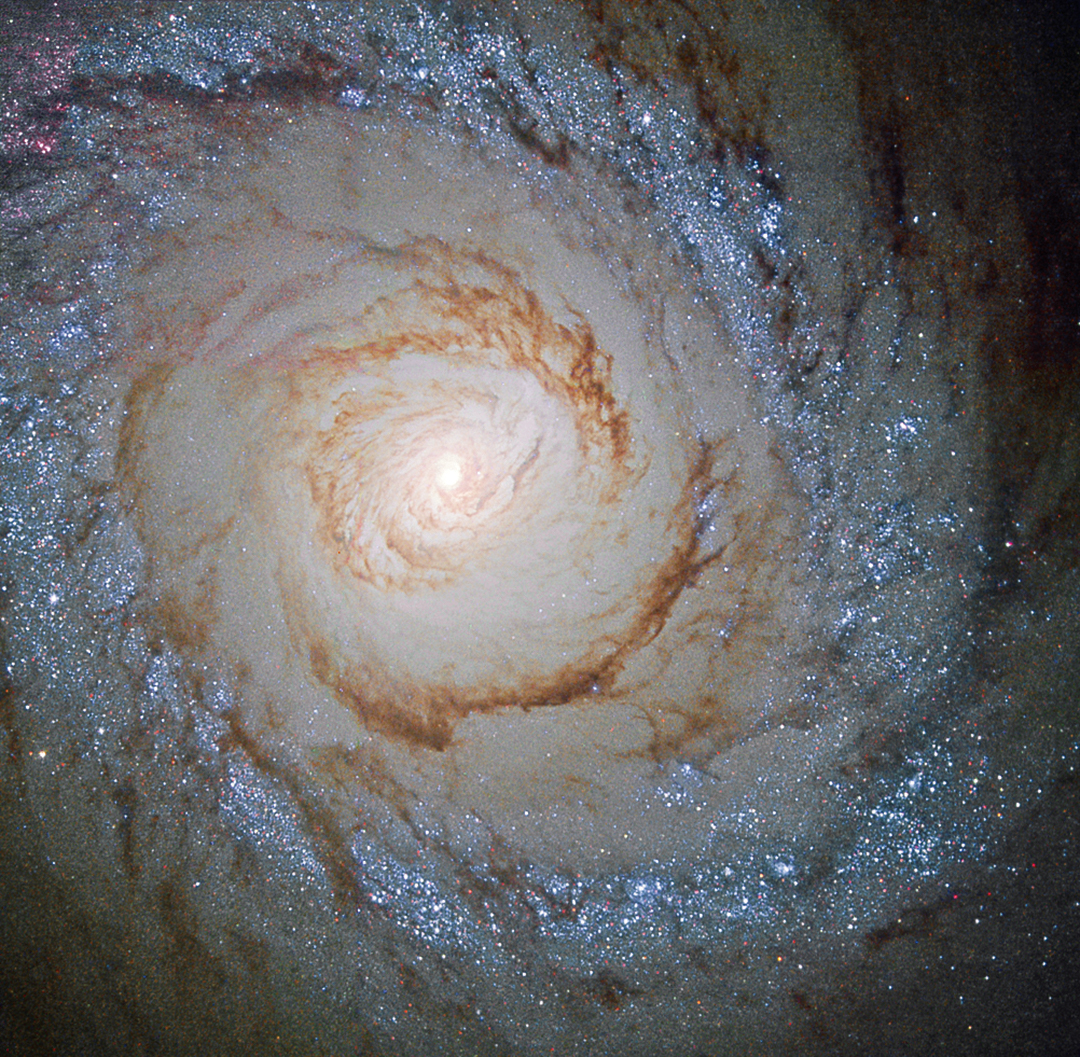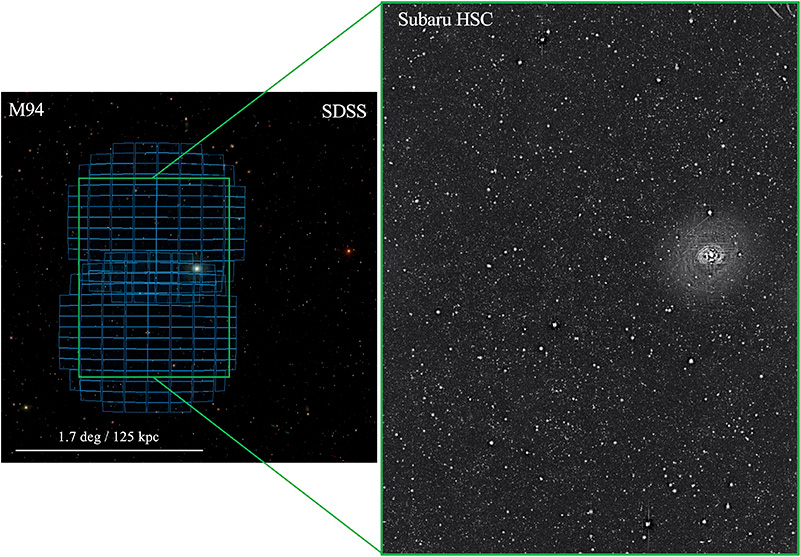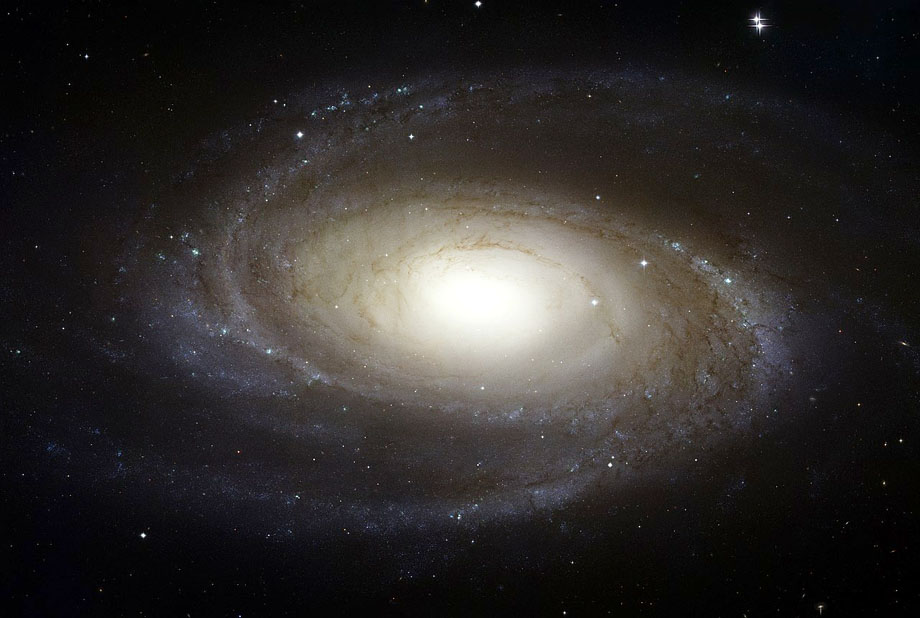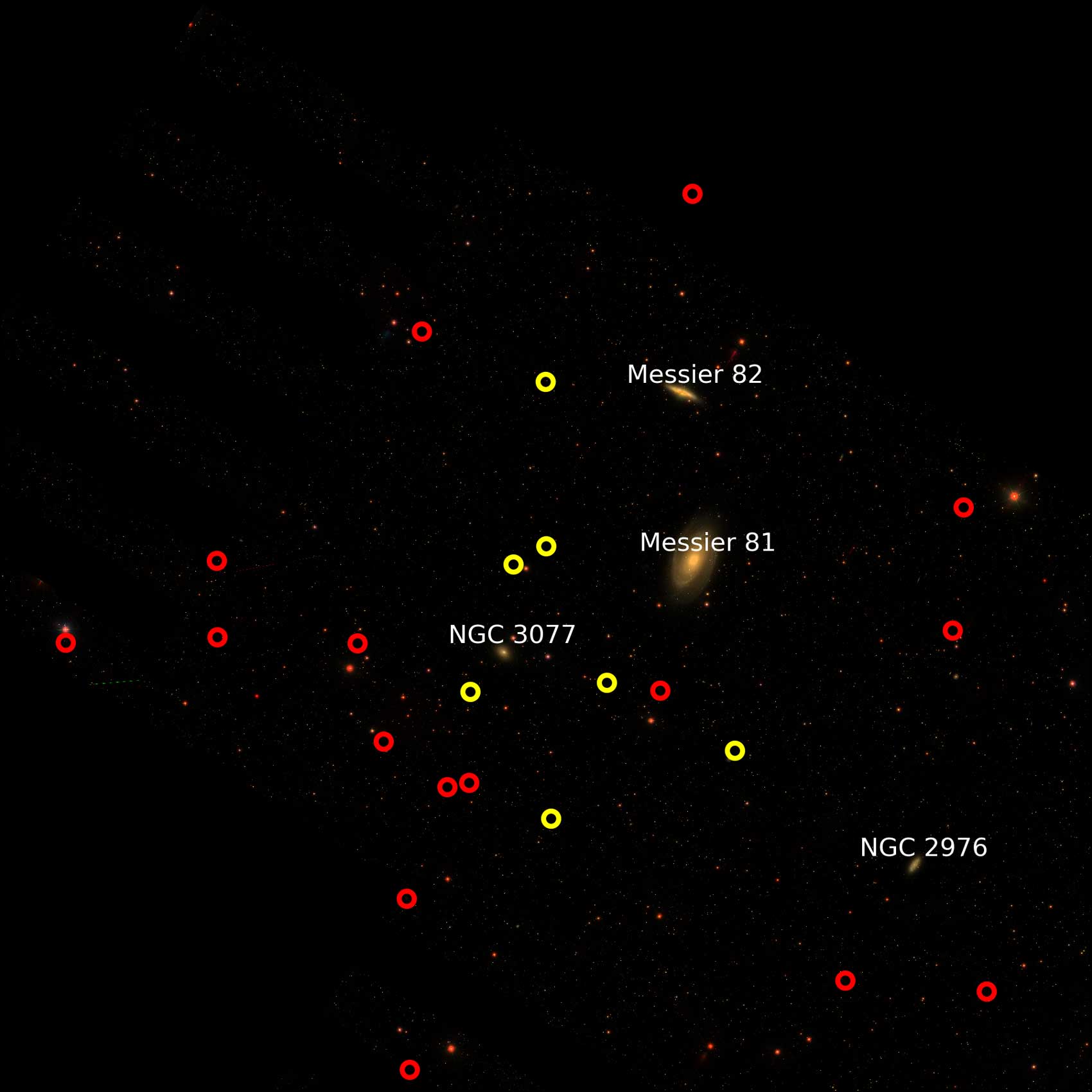New images of nearby galaxies and their surroundings reveal details in galactic formation and evolution — and puzzles that remain to be solved.
A galaxy in a telescope (or a Hubble image) may seem silent and still, but that’s only because us humans are impatient.
Over millions or even billions of years, gravity builds galaxies — and destroys them. In two studies presented June 14th at the meeting of the American Astronomical Society (AAS), astronomers show some of the ways galaxies can grow and die.
M94: A Quiet Life

M94: ESA / HUBBLE & NASA;
Given that we can’t watch galaxy evolution unfold in realtime, graduate student Katya Gozman (University of Michigan) became a geologist of sorts, digging deep into the history of the spiral galaxy M94, 16 million light-years away in Canes Venatici.
In geology, it’s the rocks that remember; in astronomy, it’s the stars. When two galaxies collide, the larger one flings the stars of the smaller one to the galactic curb, out to the stellar halo. Compared to the galaxy, the stellar halo is vast, covering more than 10 times the area on the sky as the galaxy itself.
Using the Hyper Suprime Camera on Subaru Telescope, which rests atop Mauna Kea, Hawai‘i, Gozman took long, sensitive observations of this galaxy. These images dig deep to reveal individual stars in its halo. But to the team’s surprise, despite the images’ sensitivity, they found few stars in the halo. Those that are there are ancient, as indicated by their pristine makeup.

Adam Smercina; Left: SDSS; Right: NAOJ / Hyper Suprime Cam
Such a sparse halo indicates that M94 has lived a quiet life, with few galactic collisions marring the peace. Even dwarf galaxies have apparently steered clear.
That means the crowd of stars at M94’s center didn’t gather there because of a merger, as is often the case in other galaxies. Instead, it’s likely that the galaxy is connected to cosmic rivers, along which gas flows in to feed the galaxy’s and especially the bulge’s growth. But exactly how this happens, Gozman says, remains to be explored.
M81: Murder Mystery

ESO
On the flip side, the Hyper Suprime Cam was also behind the discovery of suspected galactic death around the spiral M81.
Eric Bell (also at University of Michigan) focused on this nearby galaxy, 12 million light-years away in Ursa Major, for its likeness to our own. He was searching for the type of faint dwarf galaxies that circle the Milky Way, and he seems to have found them: one for sure and six much fainter candidates.
Like the ultra-faint satellites that circle our galaxy, the stars of the faint candidate dwarfs are so sparse, you can see right through them, Bell explained at the AAS press conference. Their surface brightness hovers around 28 or 29 magnitudes per square arcsecond, fainter than the natural glow of the night sky (which was subtracted). He’ll need Hubble or James Webb Space Telescope observations to confirm the dwarfs’ identity.
Yet, even though Bell seems to have found what he was looking for, he calls the discovery “bananas.” That’s because the candidates he found are not satellites of M81; instead, they cluster around a much smaller neighboring galaxy, NGC 3077. They seem to be falling toward M81 as a group.

Sloan Digital Sky Survey
But what happened to the satellites that ought to cluster around M81?
Maybe M81’s gravitational field creates tidal forces that rip apart any smaller galaxies that venture too close. After all, dwarf galaxies caught in the gravitational web of a larger galaxy are fragile things. Simulations suggest that for every 100 dwarfs that fall toward a larger galaxy, only 10 are expected to survive over billions of years — the larger galaxy disperses the rest. “They’re bullies,” Bell says. “They steal [the dwarfs’] lunch money.”
But if tidal forces are to blame, Bell says, then that’s a puzzle, too: “Tides are just gravity, so they’re already incorporated in models of galaxy formation.” In other words, cosmological simulations of galaxy formation appear to be missing something. “With observations like this, plus modeling,” he says, “hopefully we’ll learn what’s happening differently in real life compared to the models.”
 0
0









Comments
You must be logged in to post a comment.